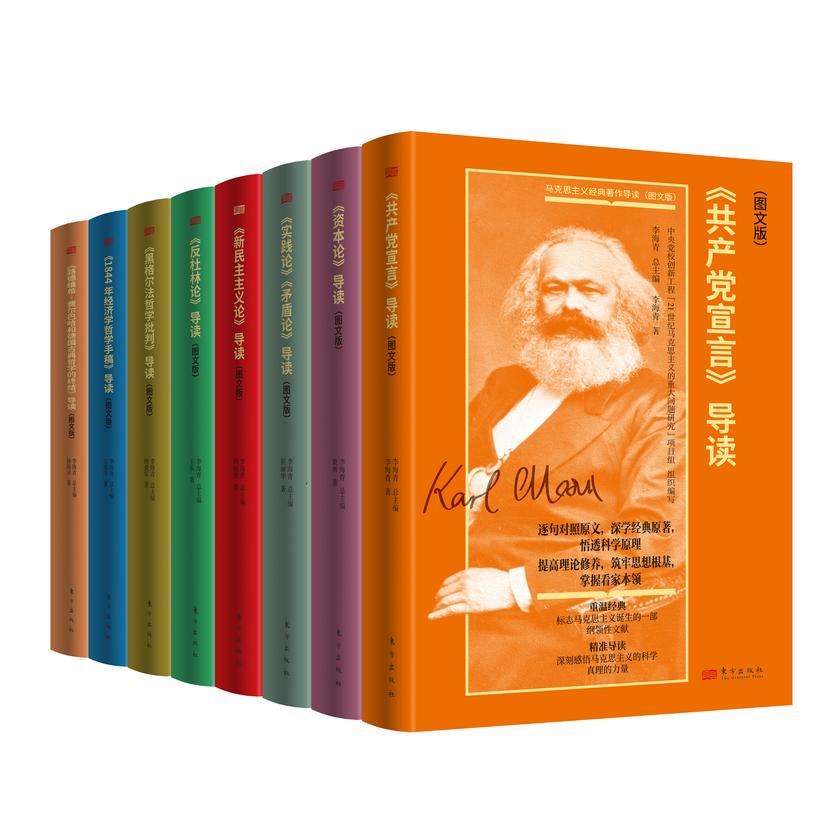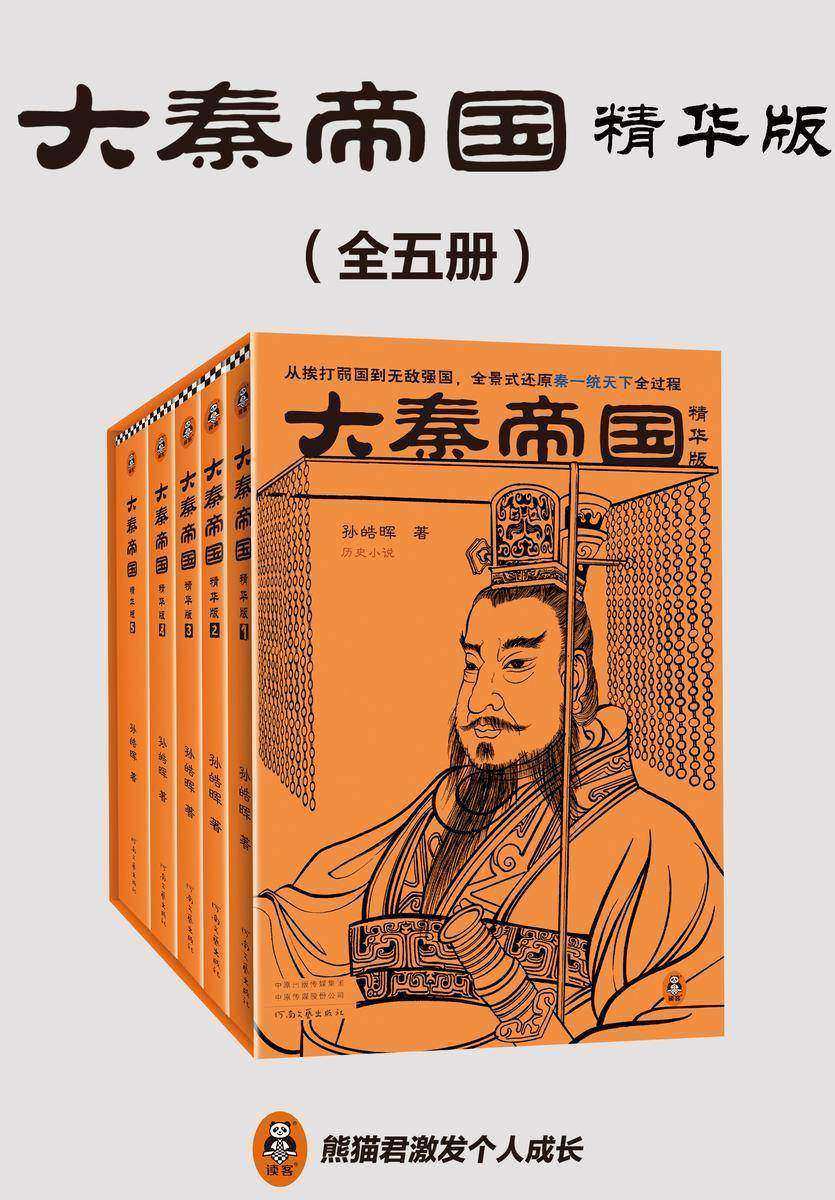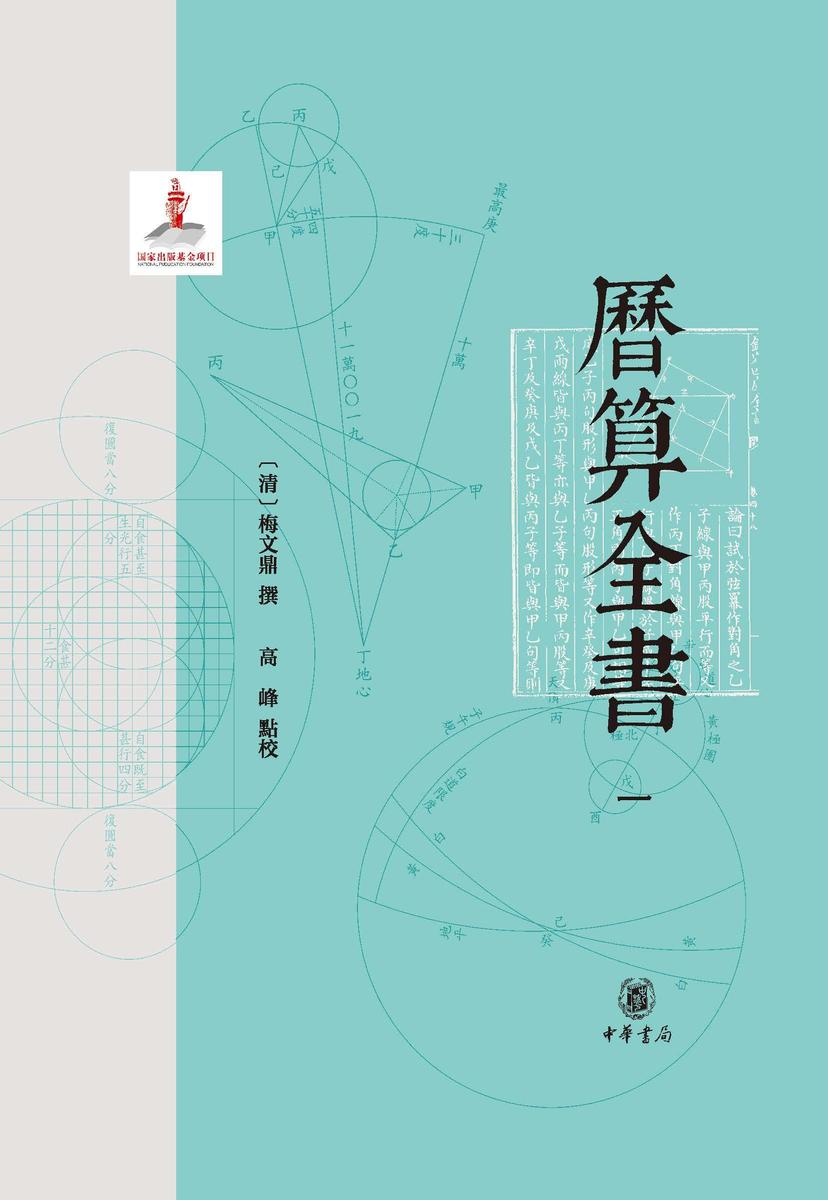

豺狼的日子系列(全6册)
¥339.00
年度大热英剧《豺狼的日子》原著系列!1963年8月25日,星期天,法国总统戴高乐不顾劝阻,出席一场声势浩大的公众聚会。 豺狼,受雇在这一天刺杀总统戴高乐。 强大的法国警方对此一筹莫展。因为没人知道豺狼在哪儿,更没人知道该如何确保那位固执的总统的安全。 此刻,豺狼的枪已远远架好。他能清楚地看见目标的五官:隐在平顶军帽下的眉毛,凝视着的双眼以及法国人那高耸的鼻子。 这一次,戴高乐总统比他生命中的任何时候都更接近死亡……


李尚龙内在驱动系列(全七册)
¥339.00
百万畅销作者李尚龙个人成长全系列。本套装包含:《你只是看起来很努力》《你的努力,要配得上你的野心》《你没有退路,才有出路》《当你又忙又累,必须人间清醒》《你所谓的稳定,不过是在浪费生命》《持续成长》《AI时代,成为强者》。


少年侦探团
¥338.00
《名侦探柯南》的灵感源泉,“日本推理之父”江户川乱步专门写给少年儿童的一套推理小说! 看大侦探明智小五郎,以小林芳雄为首的少年侦探团,如何发挥聪明才智对抗反派二十面相,为民除害?

历史文化名城名镇名村丛书(全24卷)
¥338.00
丛书简介 习近平总书记曾经指出,要让人“望得见山、看得见水、记得住乡愁”。历史文化名城名镇名村承载着厚重而丰富的历史记忆和文化传统,是“乡愁”的重要载体。保护好江苏历史文化名城名镇名村的特色,就能为我们的家园情怀留下栖息之所——只有留住“乡愁”,才能“记得住乡愁”。2016年底,江苏省文化厅开始组织编写“精彩江苏”丛书,内容涵盖历史文化名城名镇名村、地方戏曲、书画艺术、红色文化等多个方面,这既是江苏优秀传统文化的集中展示,也是延展千年文脉、推动文化建设、凝聚精神力量的创新实践。 “精彩江苏”丛书辑“历史文化名城名镇名村系列”首批图书正式出版,批推出24本。本系列共50本,涵盖我省50座*历史文化名城名镇名村,兼具文学性与史学性,展现了江苏历史演变中岁月累积的文化智慧与古物风貌,彰显了江苏人民的文化自信与自觉。丛书采用“口袋本”的形式,深入浅出,图文并茂,装帧精美,便携易读。一卷在手,令读者观尽江苏名城名镇名村之无限精彩。 作者简介 丛书主编徐耀新,江苏省文化厅党组书记、厅长,博士、教授,主要研究领域为文化理论,主要著作《昆曲表演艺术论》、《昆曲文学概论》、《昆曲美学纲要》。

John Varvatos
¥336.85
In John Varvatos, the legendary designer reveals his perspective on how rock & roll music and style have influenced his own designs and fashion worldwide. Varvatos’s personally curated collection of more than 250 images are some of the most provocative ever shot by top rock photographers from the late 1960s to today, from the Rolling Stones to the Kings of Leon. The featured photographers are among the world’s finest, including Mick Rock, Bob Gruen, Elliott Landy, Danny Clinch, Lynn Goldsmith, and more. Also included are select images from Varvatos’s own advertising campaigns, featuring artists such as Slash, Iggy Pop, Scott Weiland, and Miles Kane. Varvatos’s captions and incisive commentary on the artist and his or her look accompany each image. Every chapter also contains numerous quotes from the musicians themselves, including Mick Jagger, Keith Richards, Iggy Pop, Jack White, Pete Townshend, Robert Plant, Steven Tyler, and Patti Smith. An extraordinary anthology of some of the finest images in rock & roll and the most influential rock looks in fashion and popular culture, this volume will delight music lovers, and fans of music photography, fashion, and fashion history.


剑来·第六辑(36-42册)出版精校版
¥336.00
《剑来》是网络大神烽火戏诸侯创作的古典仙侠小说,是继《雪中悍刀行》后才情的全新力作。小说以宏伟的叙事、宏大的架构、宏富的想象力,讲述了一个平凡少年陈平安因缘际会之下走上修行之路,虽然经受了重重考验,但仍一直坚守善良初心,不断成长,终成为绝顶剑侠的故事。不同年龄层的文学爱好者都可以在小说中得到共鸣。 在《剑来》构建的光怪陆离却丰富有趣的仙侠世界里,不仅充盈着具有中国古典传统的气韵和精神,更带有浓浓的世救世思想,隐约呼应着中国历代儒家尤其是现当代新儒家探求救国自强之路的哲思。作者在小说中塑造的众多以陈平安为代表的人身上,寄予了“中国人格”,隐动着精神上承继中华优秀传统而又体现当下社会的浮脉。小说徐徐展的不仅是一步步的道山跋涉,更是忠孝、家国间的艰辛抉择,情与法难两全的伤痛,侠气与仙气的异同争执,以及根本的人性本善与人性本恶的分歧争端。这是一种站在人类至高处的宏阔格局,就这一而言,《剑来》是令人肃然起敬的一部作品,足堪代表当下网文的境界。


这个汉朝太有意思了(全7册)
¥336.00
《这个汉朝太有意思了》从汉高祖刘邦写起,一直写到汉献帝禅位,总共四百余年的历史。全套书共七卷,分两部出版,*部包括前四卷,从楚汉争霸写起,写到王莽代汉结束;第二部包括后三卷,从刘秀起兵始,至曹丕篡汉止。 *卷从刘邦沛县起义开始讲起,至刘邦去世为止,讲述了从秦末至汉初这十多年的风云变幻。秦朝末年,风云激荡,陈胜吴广振臂一呼,项羽叔侄起于江东。沛县刘邦带着自己的创业团队也踏上了反秦之路,却在鸿门宴上经历了一场生死较量。韩信暗渡陈仓,打响了楚汉争霸*战,刘邦屡败屡战,和项羽进行了异常激烈的生死决斗,*终霸王自刎乌江,刘邦踏上了人生的*。放眼内外,帝国内外部仍不安稳,刘邦将如何面对接下来的挑战? 第二卷从吕后篡权开始讲起,至文景之治结束为止。刘邦崩后,吕雉临朝称制,疯狂地展开了新一轮的杀戮,朝堂之上牝鸡司晨。大汉功臣及刘氏诸侯暗蓄力量,一举摧毁吕党,迎接回代王刘恒。文景二帝韬光养晦,与民休养生息,换来“天下晏然”的社会安定。而此时,遥远的北方,匈奴人正磨刀霍霍。汉帝国再次走到历史的十字路口,即将接受火与铁的考验。 第三卷从刘彻登基开始讲起,至刘彻去世为止。这是一个尚武的时代,汉家男儿有着坚不可摧的钢铁意志,从降服宿敌匈奴,至平乱南蛮、西夷,再至征伐交趾,汉军铁骑无往不胜,卫青大破龙城、霍去病封狼居胥,彪炳史册。然而,武帝的好大喜功和频繁用兵,使得海内虚耗,*减半,帝国面临着严重的社会危机,即将滑入深渊…… 第四卷从霍光辅政开始讲起,至王莽代汉自立为止。大司马大将军霍光受命于危难之际,辅佐幼主,全力推行轮台诏书,坚持与民休息,昭宣中兴功不可没,然而功高震主,终至家族覆灭。元帝天性软弱,无法控制汉朝高官政治上的拉帮结派与尔虞我诈;成帝刘骜好酒纵欲,外戚不断壮大,将皇权推到了危险的悬崖。王太后扶持王莽上位,不料天下道德楷模王莽的一系列复古改革,却敲响了汉帝国覆亡的丧钟!


中国信息化年鉴2017
¥336.00
《中国信息化年鉴》由工业和信息化部主管,中国通信工业协会主办,为了系统、全面、准确、如实地记载我国信息化发展史实,全面反映我国信息化发展基本情况,集中展示我国信息化建设成就与经验,集权威性、实效性、指导性与实用性为一体,为各级政府、各类企事业单位及各个领域的信息化决策提供强有力的信息支持的一本工具书。


英国《金融时报》原文阅读精选集(套1-套7 共70册)
¥336.00
编者按: 本套系所选的全部文章,均来自英国《金融时报》的原文,是一套针对英语考试阅读部分进行提高训练的书。众所周知,英国《金融时报》的文章,经常出现在各类英语考试的阅读类题目中,题材多为西方国家广泛关注的话题。本套系文章涵盖经济、环境、社会生活、文化教育、科技等话题,帮助读者全面提升阅读能力、阅读速读、语感。 本套系的2大特点: 1. 每篇原文后,有4道单选题,并提供答案解析,帮助您提升阅读理解水平; 2. 每篇文章都提供,阅读速读对比表,读者可根据自己的阅读时间,了解自己的阅读速读水平。


剑来·第五辑(29-35册)出版精校版
¥336.00
《剑来》是网络大神烽火戏诸侯创作的古典仙侠小说,是继《雪中悍刀行》后才情的全新力作。小说以宏伟的叙事、宏大的架构、宏富的想象力,讲述了一个平凡少年陈平安因缘际会之下走上修行之路,虽然经受了重重考验,但仍一直坚守善良初心,不断成长,终成为绝顶剑侠的故事。不同年龄层的文学爱好者都可以在小说中得到共鸣。 在《剑来》构建的光怪陆离却丰富有趣的仙侠世界里,不仅充盈着具有中国古典传统的气韵和精神,更带有浓浓的世救世思想,隐约呼应着中国历代儒家尤其是现当代新儒家探求救国自强之路的哲思。作者在小说中塑造的众多以陈平安为代表的人身上,寄予了“中国人格”,隐动着精神上承继中华优秀传统而又体现当下社会的浮脉。小说徐徐展的不仅是一步步的道山跋涉,更是忠孝、家国间的艰辛抉择,情与法难两全的伤痛,侠气与仙气的异同争执,以及根本的人性本善与人性本恶的分歧争端。这是一种站在人类至高处的宏阔格局,就这一而言,《剑来》是令人肃然起敬的一部作品,足堪代表当下网文的境界。


剑来·第四辑(22-28册)出版精校版
¥336.00
《剑来》是网络大神烽火戏诸侯创作的古典仙侠小说,是继《雪中悍刀行》后才情的全新力作。小说以宏伟的叙事、宏大的架构、宏富的想象力,讲述了一个平凡少年陈平安因缘际会之下走上修行之路,虽然经受了重重考验,但仍一直坚守善良初心,不断成长,终成为绝顶剑侠的故事。不同年龄层的文学爱好者都可以在小说中得到共鸣。 在《剑来》构建的光怪陆离却丰富有趣的仙侠世界里,不仅充盈着具有中国古典传统的气韵和精神,更带有浓浓的世救世思想,隐约呼应着中国历代儒家尤其是现当代新儒家探求救国自强之路的哲思。作者在小说中塑造的众多以陈平安为代表的人身上,寄予了“中国人格”,隐动着精神上承继中华优秀传统而又体现当下社会的浮脉。小说徐徐展的不仅是一步步的道山跋涉,更是忠孝、家国间的艰辛抉择,情与法难两全的伤痛,侠气与仙气的异同争执,以及根本的人性本善与人性本恶的分歧争端。这是一种站在人类至高处的宏阔格局,就这一而言,《剑来》是令人肃然起敬的一部作品,足堪代表当下网文的境界。


剑来·第七辑(43-49册)出版精校版
¥336.00
《剑来》是网络大神烽火戏诸侯创作的古典仙侠小说,是继《雪中悍刀行》后最具才情的全新力作。小说以宏伟的叙事、宏大的架构、宏富的想象力,讲述了一个平凡少年陈平安因缘际会之下走上修行之路,虽然经受了重重考验,但仍一直坚守善良初心,不断成长,最终成为绝顶剑侠的故事。不同年龄层的文学爱好者都可以在小说中得到共鸣。 在《剑来》构建的光怪陆离却丰富有趣的仙侠世界里,不仅充盈着具有中国古典传统的气韵和精神,更带有浓浓的世救世思想,隐约呼应着中国历代儒家尤其是现当代新儒家探求救国自强之路的哲思。作者在小说中塑造的众多以陈平安为代表的人身上,寄予了“中国人格”,隐动着精神上承继中华优秀传统而又体现当下社会的浮脉。小说徐徐展的不仅是一步步的道山跋涉,更是忠孝、家国间的艰辛抉择,情与法难两全的伤痛,侠气与仙气的异同争执,以及最根本的人性本善与人性本恶的分歧争端。这是一种站在人类至高处的宏阔格局,就这一而言,《剑来》是令人肃然起敬的一部作品,足堪代表当下网文的最高境界。


四美集·盛筑生小楷 中华书局出品
¥336.00
本书为盛筑生书法集。书中集作者手书诗词作品40余幅,并附释文。另附作者用yin多枚。作者在后记中写道:字以载文,文以传道。书法常以诗词为创作内容,诗词以书为外观,书以诗词为精魂,珠联璧合,美美与共。其美为何?为诗词意境之美,为汉字形体之美,为书法法度之美,为思想澄澈之美。故取此四美之名作《四美集》。


明朝那些事儿全集((全套7册,2020新版))
¥336.00
《明朝那些事儿》主要讲述的是从1344年到1644年这三百年间关于明朝的历史,参考《明实录》《明通鉴》《明史》《明史纪事本末》等二十余种明代史料和笔记杂谈,经明史专家毛佩琦审订推荐,俯瞰三百年明史,看到不一样的大明王朝: 非常看1 ?看*的个性皇帝 大明国祚276年,历经16帝,没有一个皇帝是相似的套路 跟着朱元璋学创业/建文帝的失败启示录/嘉靖帝的权力纵横术/文艺青年明武宗/坚持一夫一妻的明孝宗/木工皇帝明熹宗…… 非常看2 ?看奇才辈出的军事英雄? 忠良义士之多,令人扼腕叹息。冷眼向敌寇,洒泪为英豪? 徐达、常遇春、蓝玉,国战神谱该怎么排/书生于谦赢了北京保卫战/为什么王阳明会被日本人崇拜/阵法狂魔戚继光/袁崇焕是功臣还是罪人…… 非常看3 ? 看流传千古的名臣天团 演绎官场政治、帝王权谋。纵论江山、权术、世道、人心 朱棣背后的男人姚广孝/一代清官海瑞的多面人生/明朝头号政治家徐阶/张居正的改革触动了谁/ /东林党是怎样一种组织…… 非常看4 ? 看革故鼎新的文化荣耀 翰墨春秋、诗画江湖、小说传奇,一个文化、经济、艺术全盛的朝代? 《永乐大典》是如何编成的/浪荡才子唐伯虎/横空出世的明代四大奇书(《三国志通俗演义》《水浒传》《西游记》和《金瓶梅》)/ 狂人李贽…… 明朝,一个让人血性喷薄的朝代,一个光怪陆离的朝代、 一个强悍而温情的朝代,一个历经劫难又恢宏大气的朝代。明朝就像中国历史的褶皱,每翻一篇都有精彩无比的故事蕴含着属于中国人的文化密码、政治逻辑、人性经验。


中国集成电路材料产业技术发展路线图(2019版)
¥336.00
本书基于中国集成电路材料产业的技术创新趋势,在参照国际集成电路技术发展节的同时,以国内材料产业为主要对象,有针对性地提出国内集成电路材料产业技术创新的发展路线,包括国际国内集成电路技术及国内产业现状与发展趋势的简要总结、集成电路材料市场的现状分析与需求预测、国内集成电路材料实现产业技术创新和赶超国际产业的主要方向及正在不断涌现的新领域。


思维不设限:写给专属职场人的成事指南(套装10册)
¥335.40
套装包括: 1. 长期主义 2. 认知世界的经济学 3. 长期价值 4. 借势 5. 亚马逊逆向工作法 6. 伟大的复利 7. 优势谈判 8. *成交 9. *能沟通的七个习惯 10. 掌控管理


中外名著少年简读合集:昆虫记、凡尔纳科幻小说、森林报、四大名著、西顿动物记(全5套)
¥335.00
儒勒·凡尔纳是科幻小说的鼻祖,他的每部作品都是史诗级,其中不少还都是鸿篇巨制。本书精选了凡尔纳的四大经典科幻小说,其中包括《海底两万里》《八十天环游地球》《格兰特船长的儿女》《神秘岛》,将原本晦涩难懂的名著改编为孩子们爱看的形式,帮助孩子们轻松地读懂凡尔纳科幻名著中的经典故事!这是一本非常适合学生阅读的好书。 本套图书将法布尔《昆虫记》原著中的昆虫故事改编成精美的插图本,用拟人化的写法揭示了不同昆虫的生活习性,用写实的插图展示了昆虫们的外形特征,让孩子们在阅读昆虫故事的同时了解不同昆虫的习性,让生活在钢筋水泥环境中的孩子们感受到大自然的奇妙,体会法布尔先生对生命的尊敬和热爱。这是一套非常适合学生学习阅读的经典名著。 这部名著是苏联著名儿童科学作家维·比安基的代表作。著者以其擅长描写动植物生活的艺术才能,用轻快的笔调、采用报刊形式,按春、夏、秋、冬四季12个月,有层次、有类别地报道森林中的新闻,森林中愉快的节日和可悲的事件,森林中的英雄和强盗,将动植物的生活表现得栩栩如生,引人入胜。著者还告诉了孩子们应如何去观察大自然、如何去比较、思考和研究大自然的方法。 四大名著指的是《水浒传》《三国演义》《西游记》《红楼梦》四部杰出的古典著作,它们是中华民族的文化瑰宝,具有极高的艺术成就,值得人们一读再读。本书精简了四大名著的内容,使之适合青少年阅读,并配以精美插图,增加阅读趣味。《水浒传》描写了一群不堪压迫的“好汉”,其中的108位好汉个个性格鲜明,他们或智或勇,或洒脱或忠义,他们满腔热血却无力回天,让人唏嘘感叹。《三国演义》是一部历史演义小说,东汉末年群雄割据,魏、蜀、吴三国之间你来我往,政治、军事上争斗不断。一个个叱咤风云的英雄人物,在这乱世中上演了一幕幕荡气回肠的风云史诗。《西游记》是一部浪漫主义的神魔小说,讲述了孙悟空、猪八戒、沙和尚和白龙马护送圣僧唐三藏到西天取经,他们历经九九八十一难,终到达西天取得真经。小说中,描绘出了一个奇幻瑰丽的神话世界,情节曲折、扣人心弦。《红楼梦》是古典小说的之作,讲尽了人间烟火、诉全了悲欢离合,以贾府为首的四大家族由盛而衰为背景,红楼儿女们的爱情悲剧为脉络,描绘了一幅栩栩如生的社会世态百相,极具文学性与艺术性。 《西顿动物记》(少年简读版)全套4册,彩色环保印刷,针对青少年读者,量身定制,根据《西顿动物记》原著精心改编,以童话般的叙述方式、拟人化的描写手法以及清新淡雅的插图设计,将心灵深处迸发出的动人情感刻画得淋漓尽致。


马克思主义经典著作导读(套装全8册)
¥334.99
套装包括:《1844年经济学哲学手稿(导读图文版)》《反杜林论(导读图文版)》《资本论(导读图文版)》《黑格尔法哲学批判(导读图文版)》《共产党宣言(导读图文版)》《路德维希费尔巴哈和德国古典哲学的终结(导读图文版)》《实践论》《矛盾论(导读图文版)》《新民主主义论((导读图文版)》


大秦帝国(精华版)(全5册)(从挨打弱国到无敌强国,全景式还原秦一统天下全过程。茅盾文学奖入围作品,孙皓晖代表作)
¥334.80
列国纷争的战国时期,时为西北边陲弱国的秦,内有贵族掣肘,外有强敌窥伺,已处于亡国边缘。 值此危亡之际,秦国明君贤臣迭出,百余年间,就从一个挨弱国,变成横扫天下的无敌强国。 秦孝公即位后,广招贤才,任用商鞅变法,秦国迅速崛起; 秦惠文王时期,以张仪为相,连横六国,又用司马错为将,取巴蜀为粮仓; 秦昭襄王时期,文用范雎远交近攻之策,武用白起伐楚、破赵,六国俯首; 后,嬴政奋六世之余烈,在李斯、蒙恬等的辅佐下,短短数年间,先后灭韩、赵、魏、楚、燕、齐,建立起中国历史上个大一统的中央集权国家。 翻本书,看秦如何力战群雄,统一六国!

Daniel Silva's Gabriel Allon Collection, Books 11 - 13
¥334.42
From #1 New York Times bestselling author Daniel Silva come books 11-13 in his beloved Gabriel Allon series: Portrait of a Spy, The Fallen Angel, and The English Girl.

历算全书全六册(试读本)
免费
《历算全书》是清初著名天文学家、数学家梅文鼎历算著作的合集,共计29种(另有1种存目无文),即《三角法举要》《勾股阐微》《弧三角举要》《环中黍尺》《堑堵测量》《方圆幂积》《几何补编》《解八线割圆之根》《历学疑问》《历学疑问补》《交会管见》《交食蒙求》《揆日候星纪要》《岁周地度合考》《春秋以来冬至考》《诸方节气加时日轨高度表》《五星纪要》《火星本法》《七政细草补注》《仰仪简仪二铭补注》《历学骈枝》《授时平立定三差详说》《历学答问》《古算衍略》《笔算》《筹算》《度算释例》《方程论》《少广拾遗》。 此次校,以雍正元年刻本为底本,以雍正二年刻本、《梅氏丛书辑要》本、《四库全书》本等为校本,并重新绘制了书中所有的图表、算式等。书末附有《勿庵历算书目》《梅文鼎历算书序跋》《梅文鼎传记资料》。




 购物车
购物车 个人中心
个人中心



